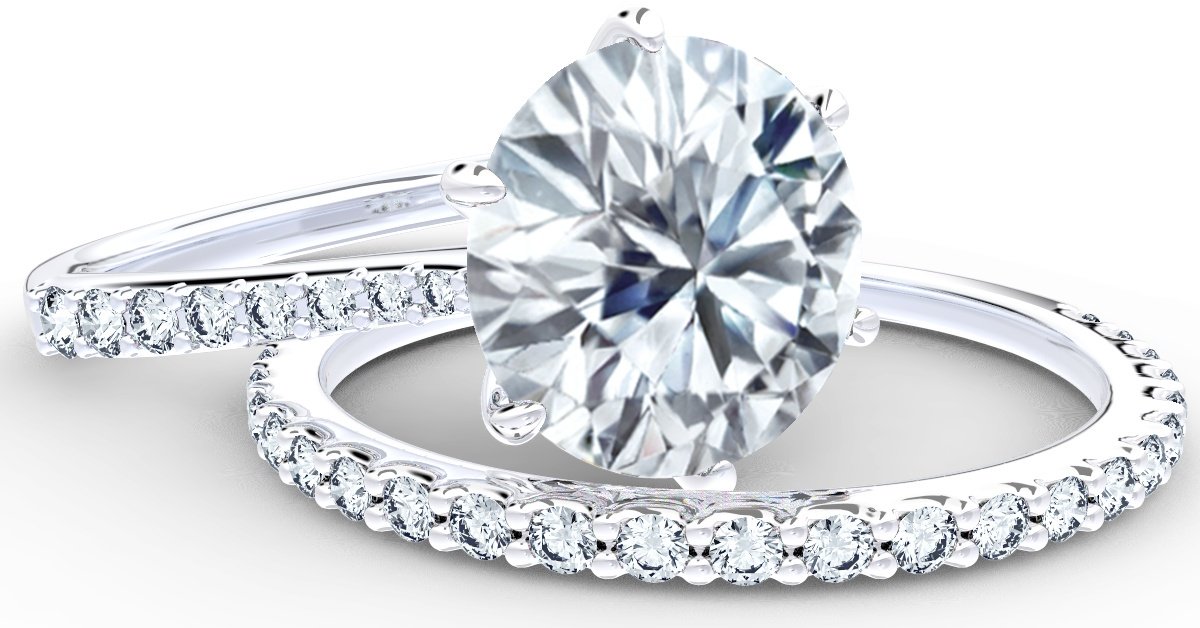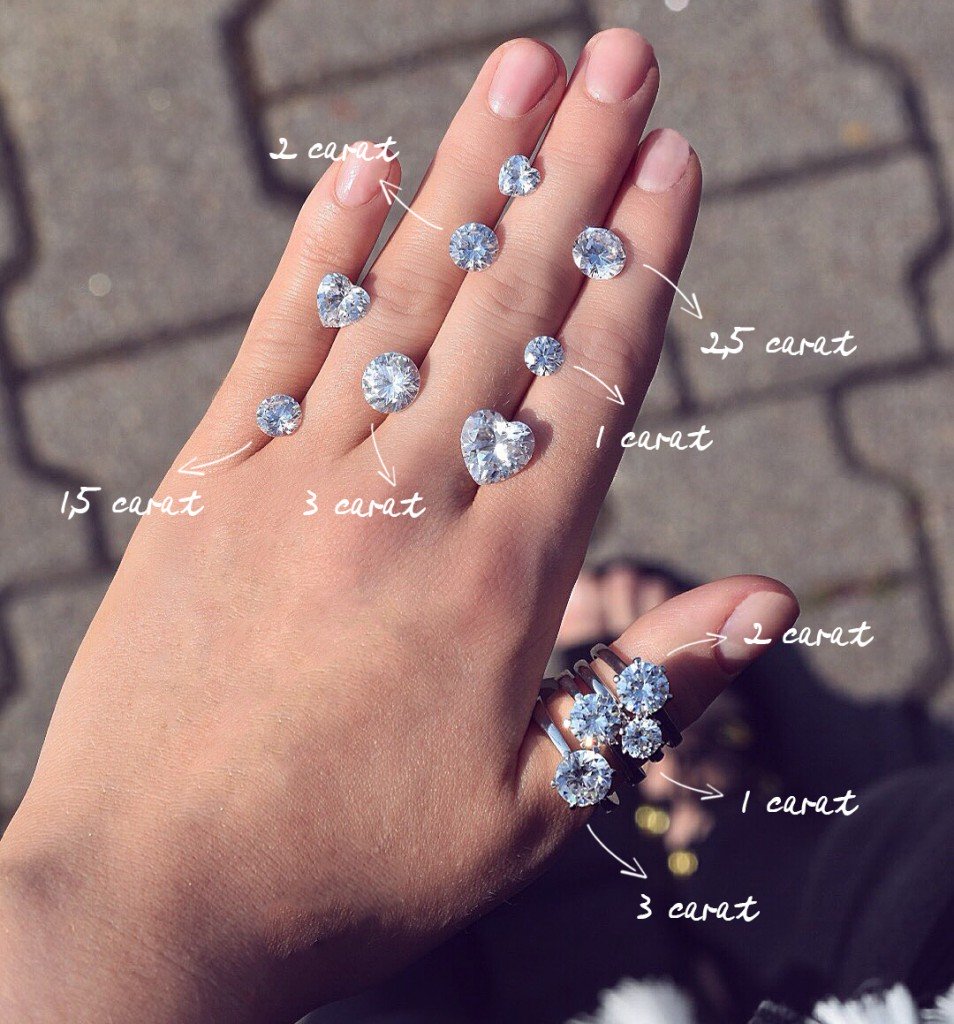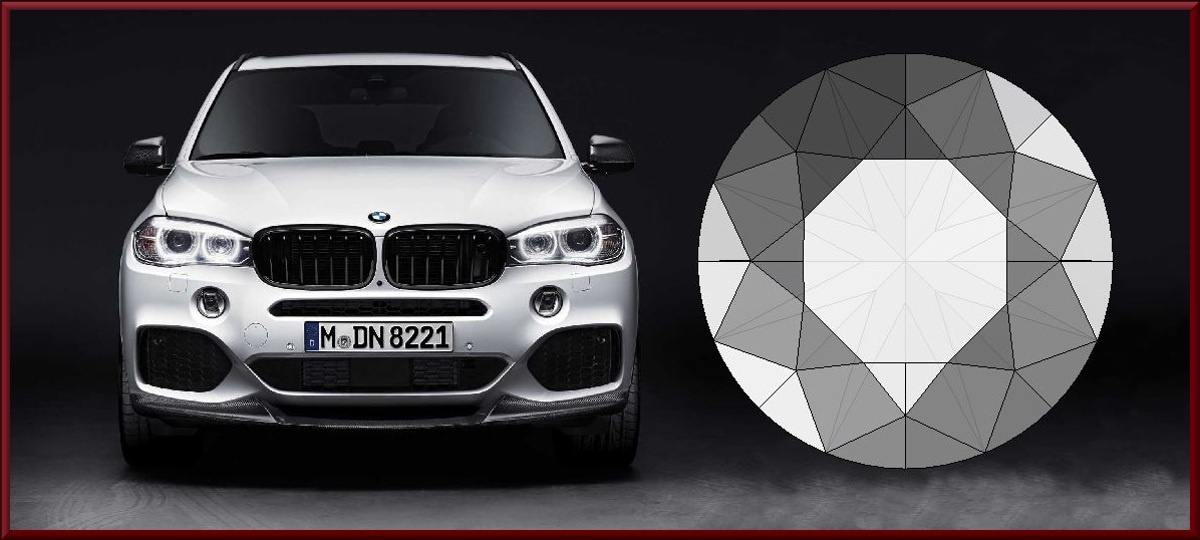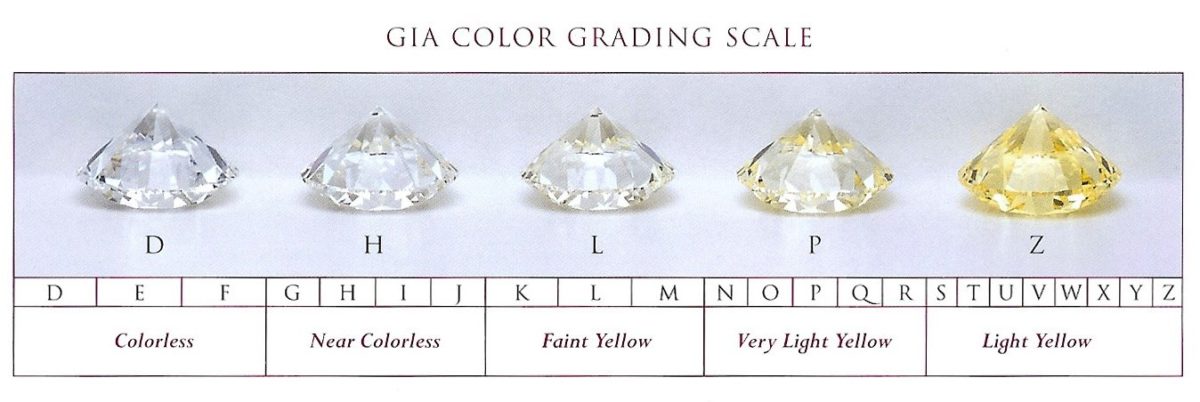
Colour, clarity, cut and carat.
You’ll find this easy 4C framework on 99% of jewellers websites. It’s a great system to understand what drives and changes the appearance and price of a diamond. Spend 10 minutes on the 4C’s and you’re well on your way to making a more informed diamond purchasing decision.
The stock standard 4C explanation that’s scattered across the internet is fine for diamonds up to around 1,00ct in size. After that 1,00ct mark one specific “C” continually changes as the diamond’s size increases; clarity.
Think of it as basic nutritional guidelines that recommend a male should eat around 2 500 calories per day. After that… someone’s getting chubby. That’s a great rule of thumb and would be sound advice to 80% of men.
For the residual 20% of the male population… it’s simply not applicable for various reasons. Endurance athletes, powerlifters, overly tall or short folks, overweight individuals, skinny individuals etc. will all need a different caloric intake to help them optimise whatever they’re attempting or to facilitate the weight loss or gain they’re looking for.
If you’re considering a 2ct diamond purchase you’re on the fringes. The basic clarity recommendations in the vanilla 4C articles simply won’t do.
1 Minute Summary:
Clarity is the C that is mostly affected by size of a diamond. Regardless of the size of a diamond every shape has a set number of facets. A round brilliant cut has 58 facets. Smaller diamonds can easily hide imperfections in this sparkly and condensed facet layout. As a diamond increases in size the facets stick to 58 – they just become larger and wider spaced apart. If you scale a diamond to the size of an SUV you’ll have facets the size of a door, and you’ll very easily see all imperfections in the diamond. To ensure your diamond of choice is eye-clean without any magnification stick to VS1 and higher clarities when you’re considering 2,00ct diamond options. At this size SI1 and SI2 options will have visible inclusions.
If you’re into condensed content, here is our Ultimate 1 Page Diamond Buying Guide. (LINK)
First C: Carat

Carat is simply a measure of weight. 5,00ct = 1 gram.
Couples considering a 2,00ct diamond size always raise the issue that they don’t want the diamond to be obnoxiously and uncomfortably big. You’re in no danger…
Halo’s are currently the most popular style of engagement ring. Although it’s a stunning feature the halo in it’s essence is used to create the illusion of a larger centre diamond.
Here is a sample image of a halo design (our Leila) set with a 1ct centre stone and a halo with 1,2mm diamonds.
The 1 carat halo design is actually slightly larger on the hand than a 2,00ct solitaire.
2,00ct is a stunning size. Don’t worry about it overpowering anything but her heart. Oh-Oh… someone’s corny today.
Second C: Colour.
Although “L” and “M” colour diamonds offer excellent value, we’ve never sold a 2ct diamond under “K” colour. If a budget doesn’t quite reach to a 2ct “K” colour, everyone seems to drop the size to a 1,50ct – 1,80ct before they drop colour to “L” or “M”.
Couples that are drawn to a larger size diamond always want to ensure the design merely complements the diamond and doesn’t draw attention away from it. With the 2,00ct diamond as focal point they want the diamond to be as white as possible within their budget. This is where the colour “K” pops up time and again.
“K” colour diamonds, especially with strong blue fluorescence (which improves the perceived colour) are great buys. If you’re shopping for a 1,50ct – 2,00ct take an hour or so and visit one of our studios to take a look at this colour shade.
Ovals and cushions concentrate colour. A “K” colour cushion will look about 2 shades lower than a “K” colour round brilliant diamond. For these shapes (cushion and oval) I would recommend “I” and better as colour.
At the top end, we’ve sold a few “D” colours. They’re beautiful… but excruciatingly expensive. Some couples want nothing but the best, and if budget allows – please indulge.
For the sake of full transparency; I’ve been working daily with diamonds for many years. There is no way I will be able to distinguish between a “D” colour diamond and a “F” colour diamond if we’re out and about and I can’t view them unset under white light directly next to each other.
F-G-H-I-J-K colours are where you’ll find a great appearance-price-ratio. You can also rest assured they’ll all be shades of “white” without any prominent tinges of yellow or brown.
Third C: Cut (Regardless of size, this is the most important C)
Diamond cut is often confused with the diamond shape (Round, oval, square).
A diamond has very special light reflection and refraction characteristics. You can think of a diamond’s facets (sides) as internal mirrors that reflect light internally to and from the diamond’s environment.
Through decades scientists and gemologists have experimented with the optimal placement and proportions of diamond facets. The modern brilliant cuts have been designed to ensure that a diamond optimally reflects light when cut to these determined proportions and dimensions.
Your 2,00ct diamond showpiece should have maximum life, fire and brilliance. If the diamond has been poorly made the size, clarity and colour doesn’t matter… you’re stuck with what looks like a dull piece of glass.
Through a series of complex measurements and comparisons a diamond grading laboratory determines how close a diamond has been cut to these “ideal” proportions. This grade is then referred to as the cut of a diamond;
- Excellent (Perfect)
- Very Good (Very close to perfect – mostly indistinguishable from Excellent cut unless you’re a gemmologist)
- Good (Very broad grade. Some are fine, some look terrible. Rather avoid).
- Fair (Nope.)
- Poor (Nope.)
Excellent cut diamonds don’t carry a massive premium over properly cut VG (Very Good) options. Unless you’re convinced a jeweller is extremely knowledgable this small premium will be a worthwhile insurance policy to ensure the diamond is well made.
Fourth C: Clarity (Greatly dependent on the size of the diamond)
While reading a few articles that discuss diamond clarity I was baffled at the omission of the fact that the size of the diamond plays a tremendous role in the grading of clarity.
Clarity refers to the level and/or amount of inclusions/imperfections in a diamond. It’s measured at 10X magnification and is classified and graded by human beings. Magnify any diamond by a factor of 100X and you’ll find impurities. Don’t let “flawless” clarities appeal to the poet in you.
With no two diamonds being alike the standards for what constitutes any clarity grading is vague. The grader considers the location of the impurities, the type, the amount and the effect it has on the appearance of a stone.
As a rule of thumb “VS2 and better” has always been a guarantee that your diamond will appear flawless to the naked eye (referred to as eye-clean). As cliched as it is – no one is walking around with a magnifying glass inspecting diamonds at parties. Eye-clean is good enough when it comes to clarity.
A round diamond has 58 facets (including the culet). Obviously these light reflecting and refracting facets are way more condensed in a small stone. The larger the diamond is, the easier it gets to look into the heart of the crystal, see each facet and spot imperfections. To illustrate this fact we’ve 3d scaled a diamond to X5 size. As you can imagine you’ll very easily see into a diamond of this size;

If you’re buying a 0,50ct diamond chances are excellent that most SI2 diamonds will still appear eye clean. If you 3D scale that very same 0,50ct to the size of a 2,00ct you’re hit with a double set of issues – the same inclusions are significantly larger (maybe visible with the naked eye) AND the less concentrated facet layout makes inclusions easier to see;

The grading standards are not cast in stone. Diamond imaging has taken massive strides in the past few years and I’m convinced grading laboratories are putting these technologies to work.
A few short years back I would say there is no way a laboratory uses 3D scaling for grading diamonds. There has to be a check in place where a grader views the diamond without magnification and if there are visible inclusions the diamond can’t be classified as VS2 and better.
Truth be told; we are seeing more and more 2,00ct+ VS2 and VS1 diamonds (GIA graded) with inclusions visible to the naked eye. You need to see close up HD image of a 2,00ct to make a call on whether the diamond will be eye-clean or not. Don’t rest assured on the assumption that a VS-clarity diamond will be eye-clean. If any jeweller shrugs off this issue they’re way out of tune with the 2,00ct market.
Talk To Us.
Most jewellers with business models similar to ours will say their key core competence is their pricing. That’s why you’ll see the bargain bin ads swearing they’re the cheapest in the world. They’re not. Here’s some further reading on this issue.
Our core competence is the meticulous way in which we source diamonds. Although we stick to GIA certificates, we’ll never in ‘n million years buy a diamond on the certification alone. Whenever we source diamonds we request video and HD imaging of every single diamond we’re interested in. With VS gradings being broader than they were a few years ago we daily see VS2 diamond options in stock lists that simply won’t be eye-clean.
Sure, these visibly included VS2 diamonds are cheaper than the true eye-clean VS2/VS1 diamonds. Sourcing “cheap” diamonds is easy. Just know, even if you’re comfortable with a poor VS2 diamond we still won’t sell it.
What our 2,00ct customers know is that we’ve taken hours to sift through hundreds of diamonds available at the massive factories we import from. We don’t compromise on cut. We don’t compromise on clarity. We don’t hide behind GIA certificates.
Every option offered to you has been thoroughly checked by very experienced eyes.
Our final commitment to quality is clearly demonstrated in our upgrade policy where you receive 100% credit for your initial diamond purchase whenever you wish to upgrade your diamond. If you buy a diamond from us you know that I’ll be more than happy to trade it in when you upgrade.
We will never sell a diamond that we wouldn’t carry in our normal inventory. That’s commitment.
Come see how finely curated our inventory is. You’ll know you’ve found your jeweller.
Thank you for reading. Feel free to reach out to me directly on johan@poggenpoel.com
Take care.
Johan Poggenpoel




